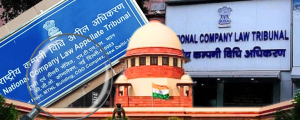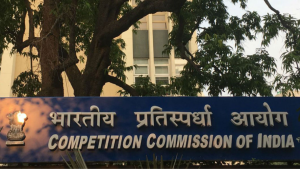
Menu
Menu

Menu
The Right to a Writ
This is Part II of a three part blog post. You can find Part I here.
It’s been a couple of weeks since I wrote the introductory piece to this post, a ready reckoner to the right to constitutional remedies under the Indian constitution. Today, we’ll pick up from where we left off last time, when we were discussing possibly the most important four letter word in Indian legalese. W-R-I-T. It’s a small word, but it packs a powerful punch.
A quick recap: writs are the orders certain courts issue to enforce a citizen’s Fundamental Rights (as laid out under the Indian Constitution). It sounds easy enough, but getting a writ order passed is a bit more of a treasure hunt. There are a bunch of conditions that need to be fulfilled and specific fora you need to visit, to get your writ.
For starters let’s try to understand when you can invoke your right to constitutional remedies. We’ll break it up into four main conditions that need to be satisfied.
1. First of all, one of your Fundamental Rights needs to be violated. This means any one or a combination of your broad Fundamental Rights – namely the right to equality, right to freedom, right against exploitation, right to freedom of religion, and cultural and educational rights, along with any of the more specific rights mentioned under these (such as the right to education), need to be breached.
2. Secondly it won’t merely do if HR manager Ram at the California based software Company where you work implements a policy partial to men or next door neighbour Shyam cuts you off and doesn’t let you talk at an apartment resident’s association meeting. By and large fundamental rights are invoked against ‘the State’. Who or what is this shadowy ‘the State’, spelled with a capital S you ask? ‘The State’ is a collective reference to the bodies against whom Fundamental Rights are enforceable. Article 12 of the Indian Constitution attempts to sketch out who exactly ‘the state’ is. As per Article 12, ‘ the State’ includes’:
a. The Government and Parliament of India.
b. The Government and Parliament of each of the states of India.
c. All local and other authorities under the pervasive and predominant control of the Government of India. Local authorities are those such as panchayats and local municipalities while an example of other authorities would be a governmental body.
The makers of the constitution envisaged the enforceability of citizen’s Fundamental Rights against the government to be one of the key holders of the government’s accountability to the people.
3. Thirdly you need to be more than just a witness to this breach of Fundamental Right. You need to be the victim, In general, you need to be the person whose constitutional right or legal right has been infringed. However, to expand the base of citizens who can file writs, the judiciary has come up with something called the ‘doctrine of sufficient interest’. As per this doctrine, any person whose fundamental rights are remotely affected in the tiniest way can petition the court to pass a writ order. It also allows proactive people focused on public betterment to file writ petitions for any person or class of people if that person or class of people cannot afford it.
4. Fourthly and finally, if your Fundamental Right is in fact violated by the State, even then you can’t just march into any court or tribunal in this country and demand that your writ petition be passed. In the three tiered system that is the Indian judiciary, it’s only the second and the highest rungs, namely the High Courts and the Supreme Court have the authority to issue writs.
There you have the essential elements of a writ filing. Fundamental Rights, violation of these rights, ‘the State’, victims not witnesses, and the higher judiciary. That’s how you establish the right to your writ.
While there are several nuances of Fundamental Rights that we’ll go into in future blog posts, this is all for today. I’ll be soon following this up with a post detailing the different kinds of writs and writ related data in the DAKSH database. Thanks for reading and see you soon!
The views expressed in this article are solely those of the author’s and they do not represent the views of DAKSH.

Ramya Tirumalai
RECENT ARTICLES


Testing the Waters: Pre-Implementation Evaluation of the 2024 CCI Combination Regulations
Ritima Singh
December 18, 2024

Not Quite Rocket Science
Surya Prakash B.S
November 12, 2024

Administration of justice needs an Aspirational Gatishakti
Surya Prakash B.S
October 24, 2024

-
Rule of Law ProjectRule of Law Project
-
Access to Justice SurveyAccess to Justice Survey
-
BlogBlog
-
Contact UsContact Us
-
Statistics and ReportsStatistics and Reports
© 2021 DAKSH India. All rights reserved
Powered by Oy Media Solutions
Designed by GGWP Design